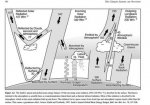- Joined
- Jan 25, 2012
- Messages
- 44,727
- Reaction score
- 14,479
- Location
- Texas
- Gender
- Male
- Political Leaning
- Conservative
No it doesn't, but the greenhouse effect is not in question.Well, less cooling at night actually proves the greenhouse effect. That's not exactly a good thing.... :lol:
What is in question is the climate sensitivity of the additional CO2, and the fact that it is behaving differently that the modelers predicted.
Here is what James Hansen wrote in 1995.
http://pubs.giss.nasa.gov/docs/1995/1995_Hansen_ha09800r.pdf
So he expected the T-Max and the T-Min to be equal.We can safely predict that on the long run the effect of the diurnal damping on maximum temperatures will be small,


